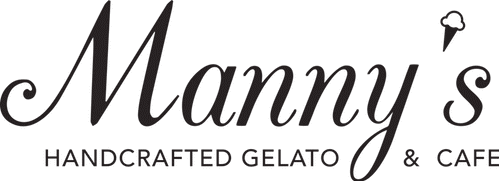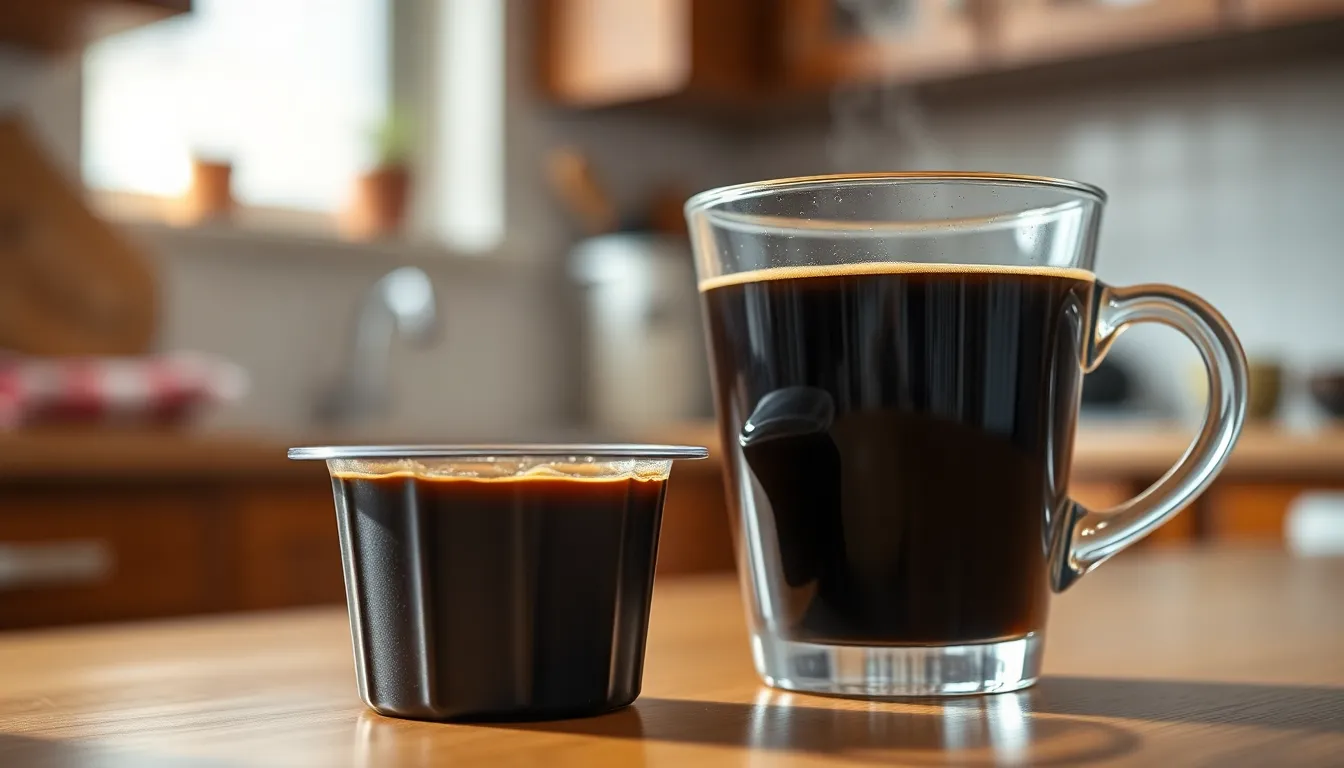Can you use Keurig cups twice? It’s a question many coffee lovers ask when trying to stretch their budget or reduce waste. After all, those little K-cups can add up in cost and environmental impact over time.
Most Keurig users toss their K-cups after a single use, but you might be wondering if there’s more life left in those pods. Whether you’re looking to save money on your daily coffee habit or trying to make more environmentally friendly choices, reusing K-cups is an option worth exploring. Let’s examine what happens when you try to brew a second cup from a used Keurig pod and whether the results are worth it.
What Are Keurig Cups and How Do They Work
Keurig cups, commonly known as K-Cups, are single-serve coffee pods designed specifically for Keurig brewing systems. These small plastic containers hold pre-measured coffee grounds sealed with a foil lid to maintain freshness. Each K-Cup contains between 9-12 grams of coffee, perfectly portioned for brewing a standard 6-8 ounce cup.
The brewing process begins when you insert a K-Cup into your Keurig machine. Once positioned, the machine punctures both the top and bottom of the pod. Hot pressurized water (around 192°F) flows through the top hole, saturates the coffee grounds inside, and extracts the flavor compounds. The brewed coffee then exits through the bottom puncture and directly into your mug.
K-Cups come in hundreds of varieties from over 80 brands, including options for coffee, tea, hot chocolate, and even iced beverages. Most pods feature a paper filter inside that prevents grounds from ending up in your cup while allowing the extracted coffee to pass through. This filtration system is a key component that may affect reusability potential.
Standard K-Cups aren’t designed for multiple uses, as evidenced by their construction. The internal pressure during the first brewing cycle typically extracts 75-80% of the available coffee solubles, leaving minimal flavor compounds for a second use. Many Keurig users, like Rikki’s neighbor who tried reusing pods to cut down on his coffee budget, report significantly weaker taste when attempting a second brew.
Can You Use Keurig Cups Twice? The Short Answer
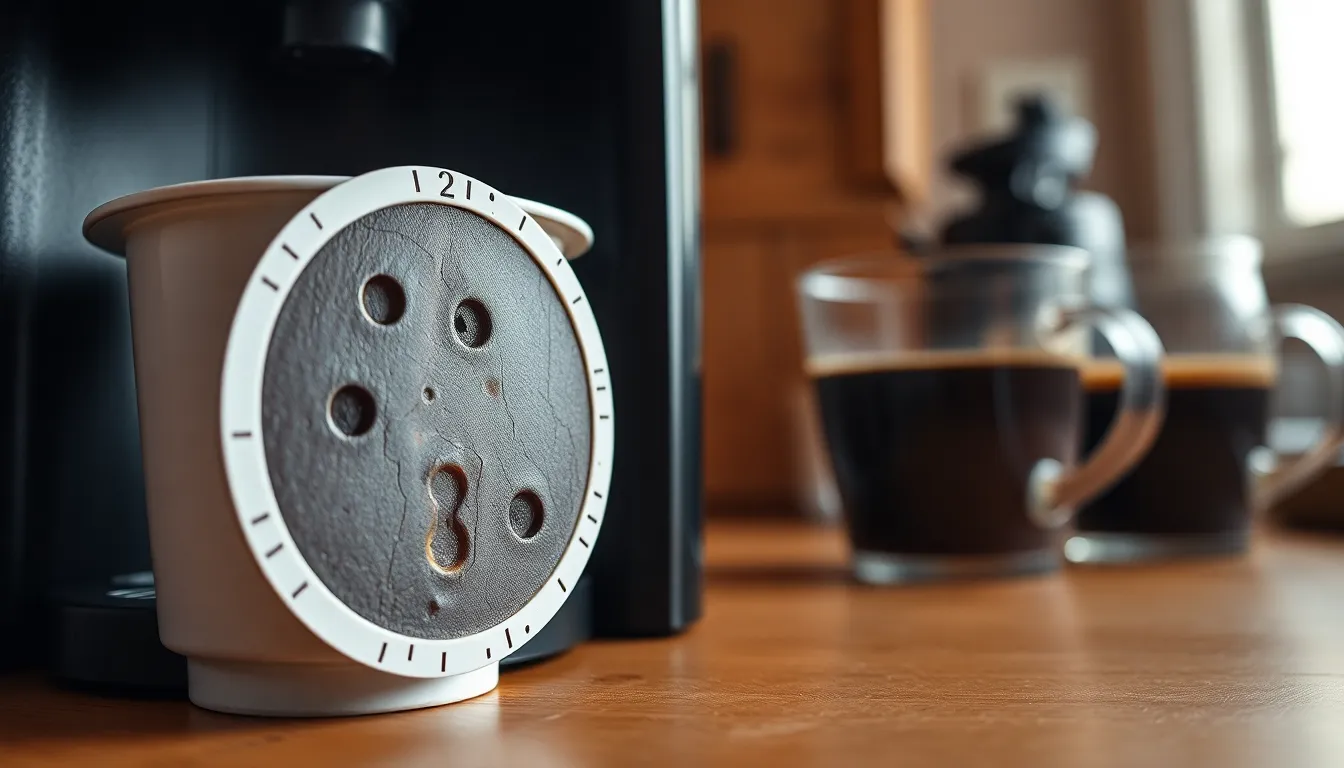
K-Cups are designed for single use only. These disposable coffee pods deliver optimal flavor and strength in just one brew cycle. When you attempt to use a K-Cup twice, you’ll get noticeably weaker, often bitter coffee that lacks the rich flavor of the first cup.
The physical structure of K-Cups makes reusing them impractical. During the first brewing cycle, your Keurig machine punctures both the top foil and bottom plastic of the pod. These punctures allow water to flow through but make it virtually impossible to properly reseal the pod for a second use. Also, most of the coffee’s flavor compounds have already been extracted during the initial brew, leaving insufficient grounds for a quality second cup.
Some coffee drinkers try workarounds like running used pods a second time or adding more water, but these methods produce unsatisfactory results. The flavor degradation is important, and there’s also a risk of contamination from used grounds sitting in the pod.
For those concerned about sustainability or cost, reusable K-Cups offer a better alternative. These pods, typically made from stainless steel or BPA-free plastic, let you add your own coffee grounds and can be used multiple times. They provide both environmental and economic benefits while maintaining better brewing quality than attempting to reuse disposable pods.
Why Keurig Cups Are Designed for Single Use
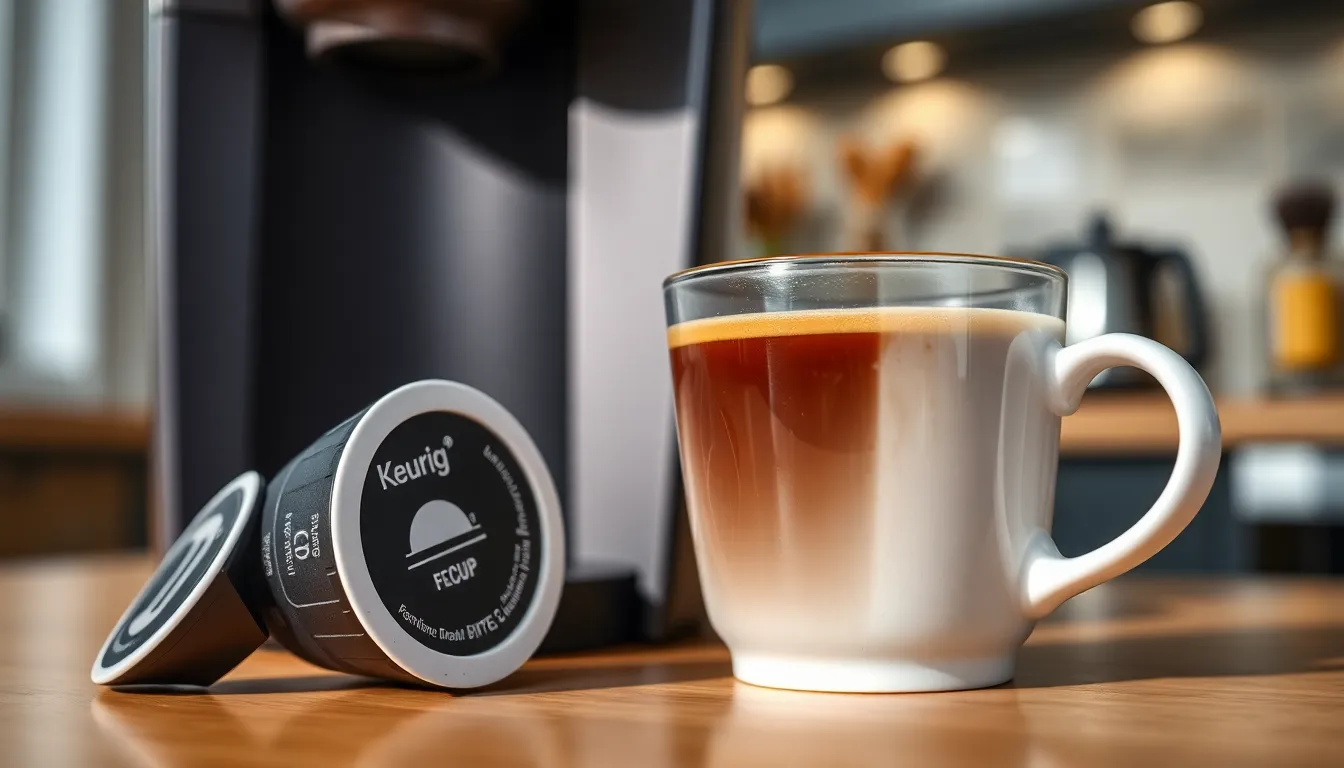
Keurig cups, commonly called K-cups, feature a exact design that’s engineered exclusively for one-time use. Each pod contains precisely measured coffee grounds sealed within a plastic or aluminum shell with an integrated filter, creating an oxygen-free environment that preserves freshness and ensures consistent brewing results.
Coffee Extraction Science
Coffee extraction in Keurig machines follows precise scientific principles that don’t support multiple uses of a single pod. During the first brew cycle, hot pressurized water flows through the grounds and extracts approximately 75-80% of the soluble coffee compounds, including oils, acids, and flavor molecules. These compounds give your coffee its characteristic taste, aroma, and body. A second brewing attempt with the same pod produces significantly weaker coffee because the majority of flavor compounds have already been removed. The spent grounds can’t release additional flavor molecules that simply aren’t there anymore, resulting in a watery, flavorless, and potentially bitter second cup.
Manufacturer Recommendations
Keurig explicitly states that their K-cups aren’t designed for multiple uses in their product documentation and user guides. The company has invested in creating pods that deliver optimal flavor during a single brewing cycle. For environmentally conscious consumers, Keurig offers the My K-Cup® Universal Reusable Coffee Filter as an alternative that lets you use your preferred ground coffee repeatedly. This reusable option provides a manufacturer-approved method to reduce waste while maintaining brewing quality. The puncture mechanism of Keurig machines also damages the physical integrity of disposable K-cups during the first use, making them structurally unsuitable for subsequent brewing attempts even if some flavor remained.
What Happens When You Reuse K-Cups
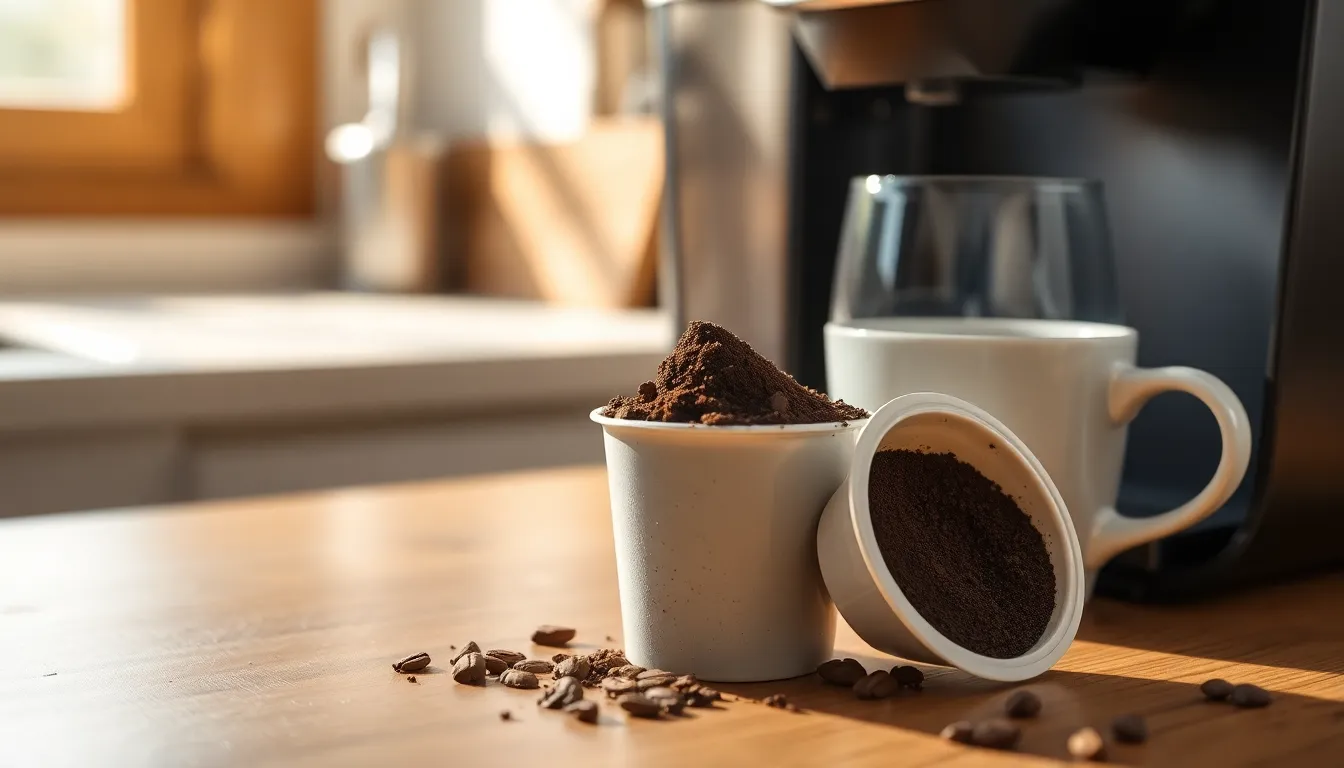
K-Cups are designed as single-use pods containing pre-measured coffee grounds sealed inside plastic and foil. When you reuse a K-Cup, you’re brewing with coffee grounds that have already had most of their flavor extracted during the first use, resulting in a significantly compromised second cup.
Taste Differences
Coffee from a reused K-Cup tastes noticeably weaker and less aromatic than a fresh pod. The first brewing cycle extracts approximately 75-80% of the soluble coffee compounds, leaving minimal flavor components for a second brew. Some coffee drinkers find that a second brew might work for a very small, mild cup, but it lacks the rich, full-bodied taste you’d expect from fresh coffee grounds. The absence of essential oils and flavor compounds in used grounds creates a flat, sometimes stale taste profile that most coffee enthusiasts find unsatisfying.
Strength and Quality Concerns
The strength of coffee from reused K-Cups diminishes dramatically compared to the first brew. Your second cup contains significantly fewer caffeine and flavor compounds since these were primarily extracted during the initial brewing process. The physical structure of K-Cups poses additional problems – once punctured by the Keurig machine, the pods can’t be properly resealed, potentially allowing contaminants to enter. Sanitation becomes a genuine issue as exposed, damp coffee grounds create an ideal environment for bacteria and mold growth if stored between uses. Using these compromised pods can also affect your Keurig machine’s performance over time, potentially clogging the needle or causing other operational issues that might reduce your brewer’s lifespan.
Tips for Successfully Reusing K-Cups
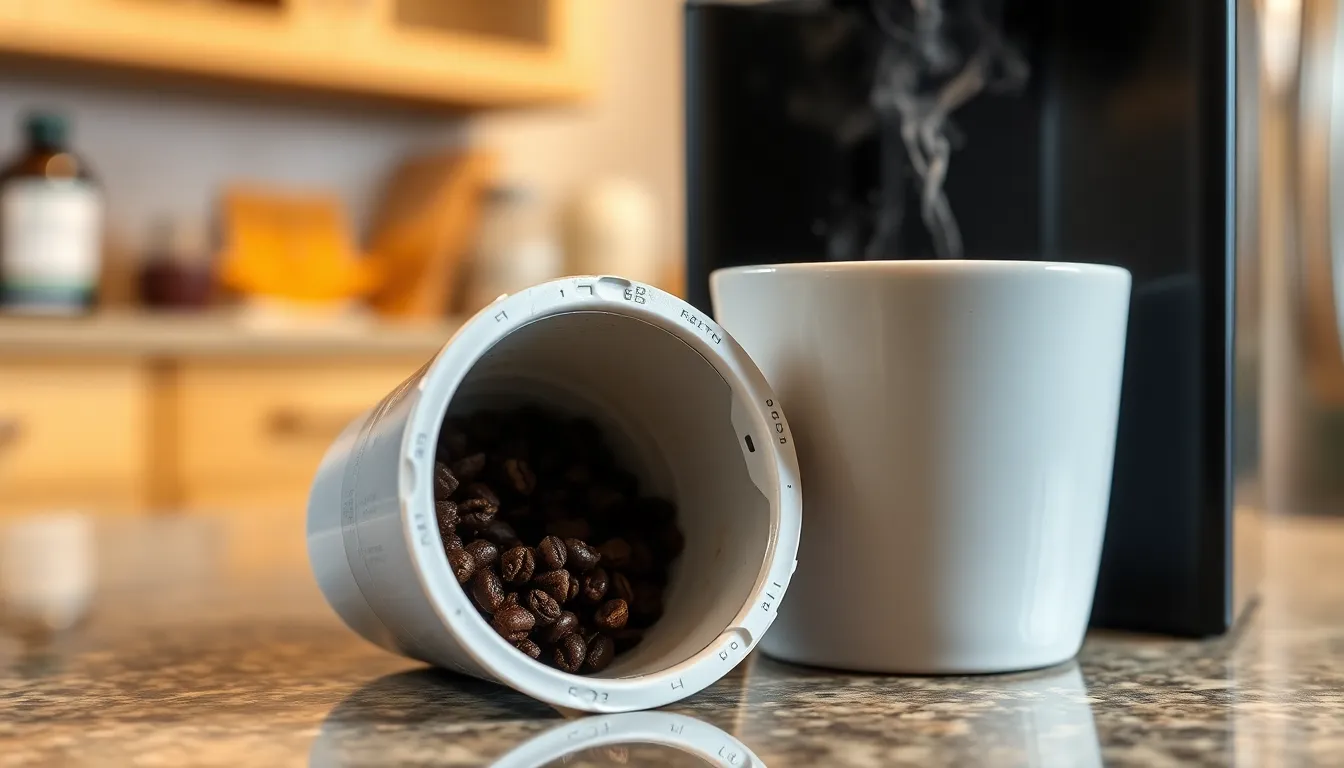
While K-Cups aren’t designed for multiple uses, you can attempt a second brew with a few strategic approaches. These techniques help maximize what little flavor remains in used pods after the first extraction cycle.
Best Coffee Types for Second Brewing
Medium to dark roast coffees retain more flavor compounds after initial brewing, making them better candidates for a second use. These robust varieties provide enough strength to deliver at least some taste in your second cup. Avoid using flavored or light roasts for a second brew as they become extremely diluted, losing virtually all nuance and character. The subtle notes present in lighter roasts disappear entirely after the first extraction, leaving nothing but colored water. Some coffee enthusiasts find that coarser ground coffee reduces bitterness in second brews, though results vary significantly depending on the exact coffee brand and roast profile.
Technique for Maximum Second Cup Flavor
Brew your second cup immediately after the first while the grounds remain warm and moist for optimal extraction. Using a smaller cup size setting concentrates what little flavor remains in the used pod—choosing a larger volume setting will only dilute the already weak coffee further. Consider gently stirring the grounds inside the K-Cup between uses to redistribute any remaining coffee solubles for more even extraction. Clean the brewing needle and surrounding area before your second brew to prevent clogging and contamination that could affect both flavor and machine performance.
For best results, ensure the coffee grounds stay moist but not soggy after the first use. Gently open the used K-Cup if you’re planning to add fresh grounds, then reseal it properly with plastic wrap or a specialized refillable lid to prevent grounds from escaping during brewing. Using finer ground coffee for your second attempt can help maximize extraction since much of the flavor has already been depleted in the first pass.
A more reliable alternative involves using Keurig’s official My K-Cup steel filter, which lets you control portions and use fresh grounds for each brew—delivering consistent flavor without compromising your machine’s functionality or your coffee’s taste.
Alternatives to Reusing K-Cups
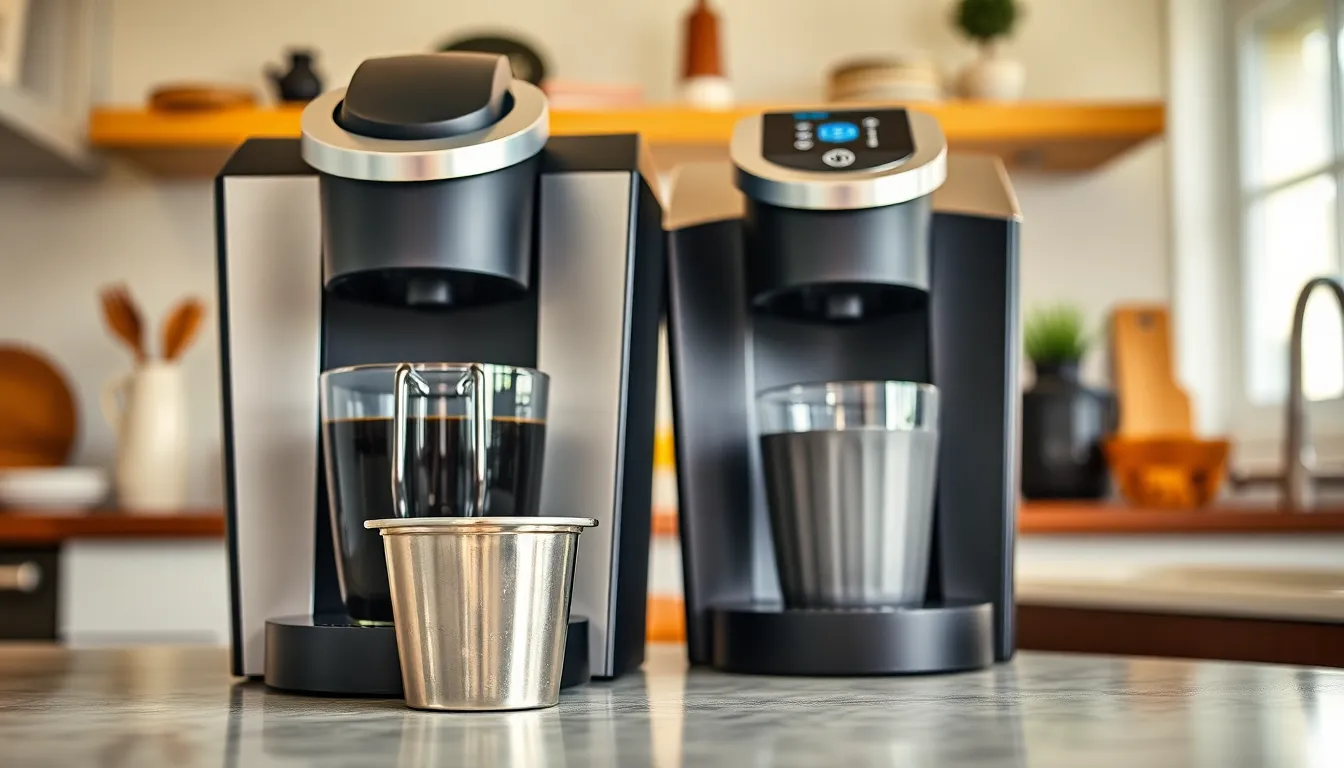
Instead of attempting to reuse disposable K-Cups, several better alternatives exist that provide both quality coffee and environmental benefits. These options offer superior brewing results while addressing the waste concerns that prompt many coffee drinkers to consider reusing single-use pods.
Reusable K-Cup Filters
Reusable K-Cup filters represent the most practical solution for environmentally conscious Keurig users. These durable filters fit perfectly into Keurig machines just like regular pods but can be used hundreds of times. Made from high-quality stainless steel or BPA-free plastic, these filters feature fine mesh that improves water dispersion throughout the coffee grounds, resulting in better extraction than single-use pods.
The design allows you to fill the filter with your preferred ground coffee, brew your cup, then simply rinse and reuse. Many models are dishwasher safe for convenient cleaning between uses. The improved water flow through the mesh design often creates a richer cup of coffee compared to disposable K-Cups, giving you both environmental and flavor benefits.
Cost-Effective Brewing Options
Switching to reusable K-Cup filters offers important financial advantages over time. The initial investment in a quality reusable filter typically pays for itself within 10-15 uses compared to purchasing single-use pods. You’ll save money by buying coffee in bulk rather than paying the premium associated with individually packaged K-Cups.
For example, a standard bag of ground coffee can produce approximately 30-40 cups at a fraction of the cost of the equivalent number of disposable pods. This approach reduces your per-cup brewing cost by up to 70%. Also, reusable filters eliminate the ongoing waste management issues associated with disposable K-Cups, which can take centuries to decompose in landfills. The environmental impact reduction combined with cost savings makes reusable filters the superior alternative to attempting to reuse disposable K-Cups.
Environmental Impact Considerations
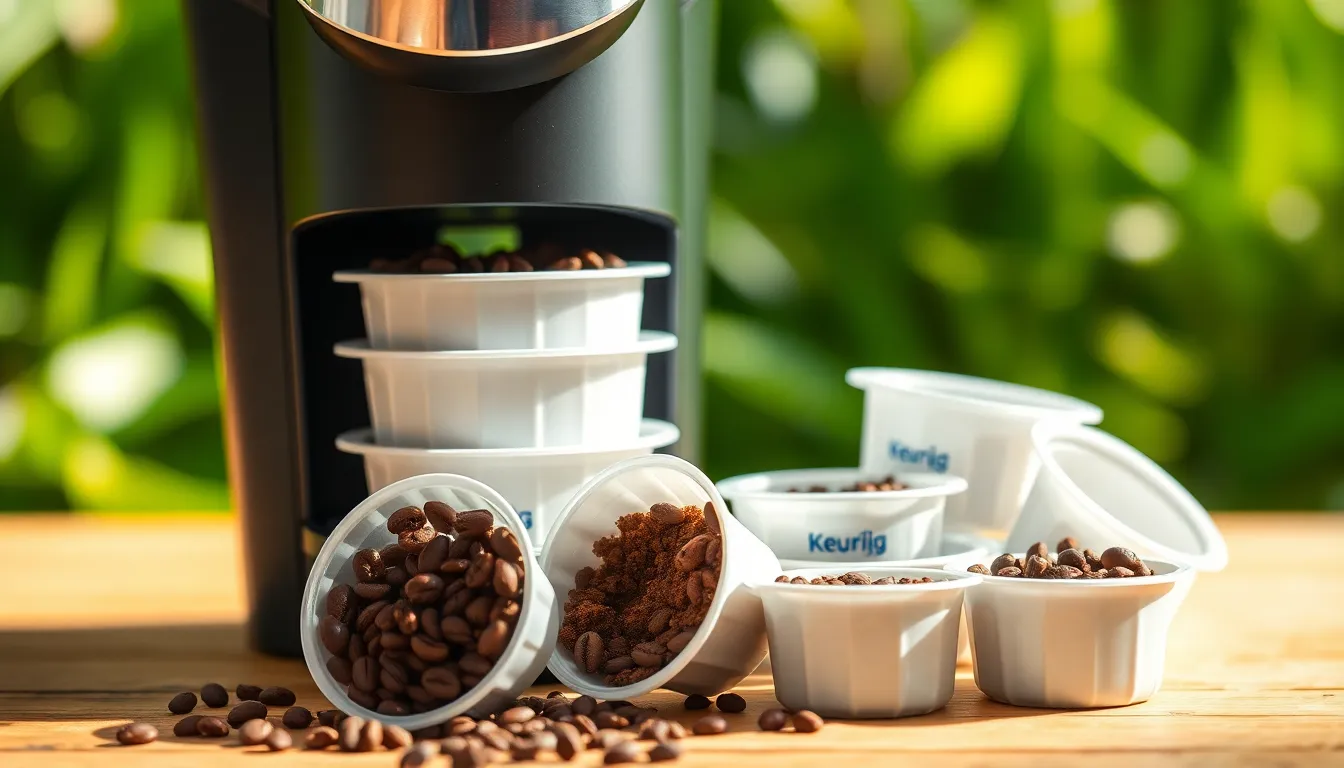
Keurig cups create important environmental problems due to their combination of plastic and aluminum materials. These single-use pods contribute substantially to plastic waste, with billions ending up in landfills annually where they can take 400+ years to decompose. The mixed material composition of K-Cups makes them particularly challenging to process through standard recycling systems, creating a persistent environmental burden.
Keurig faced legal consequences for misleading environmental claims, receiving a $1.5 million SEC fine for greenwashing after claiming their pods were “effectively recyclable.” This penalty highlights the genuine recycling challenges these products present to consumers and waste management systems. Even though instructions to separate pod components (removing the lid, emptying grounds, and recycling the plastic cup), many recycling facilities still reject these materials due to their small size and contamination issues.
The environmental footprint of K-Cups extends beyond waste concerns. The production process for these pods consumes important resources and energy, while the transportation of individually packaged coffee servings generates more carbon emissions than bulk coffee options. Single-use pods produce up to three times more greenhouse gas emissions than traditional brewing methods, according to lifecycle assessment studies.
For environmentally conscious coffee drinkers, reusable K-Cup alternatives offer a meaningful solution to reduce this impact. Products like reusable stainless steel filters or Keurig’s own My K-Cup Universal Reusable Coffee Filter allow you to enjoy the convenience of a Keurig machine while dramatically reducing plastic waste. These alternatives maintain brewing quality while eliminating the ethical concerns associated with single-use pods.
Conclusion
While you technically can brew a second cup from your K-Cups it’s not recommended for quality reasons. The significantly weaker taste watery consistency and potential sanitation issues make reusing K-Cups an unsatisfying experience for most coffee lovers.
Your best bet is to invest in a reusable K-Cup filter. These cost-effective alternatives allow you to enjoy fresh full-flavored coffee every time while reducing environmental impact and saving money long-term.
If sustainability matters to you switch to reusable options rather than trying to stretch single-use pods beyond their intended purpose. You’ll get better coffee preserve your machine’s performance and contribute less waste to landfills—a win for your taste buds wallet and the planet.
Frequently Asked Questions
Can K-Cups be used more than once?
No, K-Cups are designed for single use only. Attempting to brew a second cup results in significantly weaker, often bitter coffee. During the first brew, 75-80% of the coffee’s flavor compounds are extracted, leaving little for a second use. Additionally, the puncture mechanism damages the pod’s integrity, making proper resealing impossible.
What happens if I reuse my K-Cup pod?
Reused K-Cups produce noticeably weaker coffee with a flat taste profile lacking essential oils and flavor compounds. The caffeine content is significantly reduced, and most coffee enthusiasts find the result unsatisfying. There are also sanitation concerns, as exposed grounds can develop bacteria and mold if stored improperly.
Are there any tips for reusing K-Cups if I want to try?
If you insist on reusing K-Cups, use medium to dark roast coffees as they retain more flavor. Brew the second cup immediately after the first, select a smaller cup size setting, and gently stir the grounds before brewing. However, these methods only marginally improve results and aren’t recommended for quality coffee.
What are better alternatives to reusing K-Cups?
Reusable K-Cup filters are the best alternative. Made from stainless steel or BPA-free plastic, these filters fit perfectly in Keurig machines and can be used hundreds of times with your choice of ground coffee. Keurig offers the My K-Cup® Universal Reusable Coffee Filter as their official reusable option.
How do reusable K-Cup filters compare to disposable ones?
Reusable filters offer superior brewing quality with better water dispersion and extraction, resulting in richer coffee. They’re economically advantageous, saving money through bulk coffee purchases and eliminating ongoing pod costs. Additionally, they significantly reduce environmental impact by eliminating the plastic waste associated with disposable K-Cups.
What is the environmental impact of disposable K-Cups?
Disposable K-Cups contribute billions of units to landfills annually. Their mixed materials (plastic and aluminum) make recycling difficult, creating persistent environmental waste. The production and transportation of K-Cups generate higher carbon emissions than bulk coffee. Keurig has even faced legal consequences for misleading recyclability claims about their products.
How do Keurig machines brew coffee?
Keurig machines puncture the K-Cup and run hot pressurized water through the pod to extract flavor compounds from pre-measured coffee grounds. The pod contains a paper filter that prevents grounds from entering your cup. This system is designed specifically for single-use pods, extracting most flavor compounds in the initial brewing cycle.
Are reusable K-Cup filters cost-effective?
Yes, reusable K-Cup filters offer significant cost savings. While a single filter costs $10-20 initially, it eliminates the ongoing expense of disposable pods (50¢-$1 each). By purchasing coffee in bulk and using a reusable filter, users can save hundreds of dollars annually while enjoying fresher, customizable coffee.
